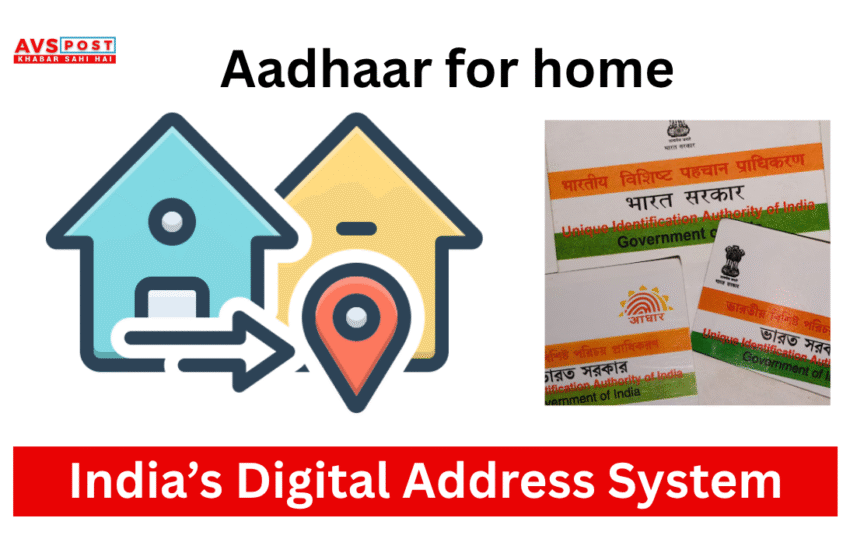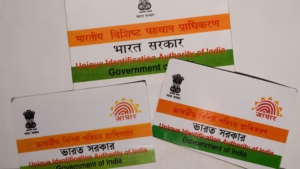Mappls : India’s Indigenous Navigation Revolution Developed by Indian Company MapmyIndia
India’s Digital Address System : Revolutionizing Locations with DIGIPIN

India’s Digital Address System
India’s Digital Address System
India’s digital transformation is taking another leap forward with the government’s ambitious plan to assign a unique digital ID to every address in the country, akin to the Aadhaar system for individuals. This initiative, centered around the Digital Postal Index Number (DIGIPIN), aims to integrate physical addresses into India’s Digital Public Infrastructure (DPI), streamlining services like e-commerce, government delivery, and more. Following the success of Aadhaar for identity and UPI for payments, this digital address system promises to tackle longstanding issues with India’s address infrastructure. Let’s explore what this plan entails, why it matters, and how it could reshape daily life.
What is the Digital Address System?
The Indian government, led by the Department of Posts and supervised by the Prime Minister’s Office, is developing a Digital Address System to assign a unique 10-character alphanumeric code, known as DIGIPIN, to every home, shop, or building. Unlike traditional postal PIN codes that cover large areas, DIGIPIN uses precise GPS-based map coordinates to pinpoint exact locations. This system aims to address the challenges of India’s current address framework, where vague, incomplete, or landmark-based addresses often cause delays and errors in service delivery.

The initiative is part of India’s broader Digital Public Infrastructure (DPI) vision, which already includes Aadhaar for identity verification and UPI for seamless payments. The government plans to release a draft policy for public feedback soon, with a potential law to establish a dedicated authority during the winter session of Parliament. Once rolled out, DIGIPIN could become as integral to daily life as Aadhaar or UPI.
Why Now? The Need for a Digital Address System
India’s current address system is riddled with inefficiencies. Many addresses are unclear, rely on landmarks (e.g., “near the old banyan tree”), or vary in format, making them hard to process digitally. This creates significant hurdles for:
- E-commerce and Logistics: With the boom in online shopping, courier services, and food delivery apps, inaccurate addresses lead to delayed or failed deliveries. Government studies estimate that incomplete address information costs India’s economy $10-14 billion annually, roughly 0.5% of GDP.
- Government Services: Inconsistent addresses complicate the delivery of subsidies, healthcare, and other public services, especially in rural or remote areas like villages, slums, forests, or hilly regions.
- Data Privacy: Private companies often collect and share address data without clear consent, raising privacy concerns. The new system aims to ensure addresses are shared only with explicit user permission.
The rise of digital services has made precise, standardized addresses more critical than ever. DIGIPIN addresses these issues by providing a unique, location-specific code that enhances accuracy and efficiency.

How DIGIPIN Works
DIGIPIN is a 10-character alphanumeric code tied to the exact geospatial coordinates of a location, such as a house, apartment, or business. Unlike traditional PIN codes, which cover broad areas, DIGIPIN offers pinpoint accuracy, making it ideal for:
- Urban and Rural Areas: Each flat in an apartment complex or home in a remote village will have its own unique DIGIPIN, ensuring no ambiguity.
- Challenging Terrains: Areas like slums, forests, or hilly regions, where formal addresses are often absent, will benefit from DIGIPIN’s GPS-based precision.
- Digital Integration: DIGIPIN can be linked to services like eKYC, property tax records, or utility management, simplifying processes across sectors.
For example, an address like “Flat 3B, Sunshine Apartments, Mumbai” could be replaced or supplemented by a DIGIPIN like “X7P4Q8R2T9,” which maps directly to the building’s entrance coordinates. This code can be shared via SMS, apps, or websites, making it easy to use in digital systems.
Benefits of the Digital Address System
The DIGIPIN system promises transformative benefits across various sectors:
- Enhanced Delivery Efficiency: E-commerce and logistics companies can deliver packages faster and more accurately, reducing costs and customer complaints.
- Improved Government Services: Precise addresses will streamline the delivery of subsidies, healthcare, and voting services, especially for marginalized communities in remote areas.
- Privacy Protection: By requiring explicit consent for address data sharing, the system aims to curb misuse by private entities, aligning with India’s focus on data security.
- Economic Impact: Reducing address-related inefficiencies could save billions annually, boosting productivity in e-commerce, governance, and more.
- Support for Digital India: As part of the DPI ecosystem, DIGIPIN complements Aadhaar and UPI, creating a robust framework for digital services.

Challenges and Concerns
While the initiative is promising, it’s not without challenges:
- Privacy Risks: Critics, as seen in posts on X, worry that linking addresses to a centralized system could enable tracking or surveillance, similar to concerns raised about Aadhaar. The government must ensure robust safeguards to protect user data.
- Implementation Hurdles: Mapping every address in India, especially in rural and informal settlements, is a massive undertaking. The success of pilot projects, like the earlier eLoc initiative, will be critical.
- Public Adoption: Convincing citizens to adopt DIGIPIN and trust the system will require clear communication and user-friendly tools, similar to the mAadhaar app for Aadhaar services.
- Regulatory Framework: The proposed authority must balance innovation with oversight to prevent misuse and ensure inclusivity, especially for those without digital access.
The Road Ahead
The government is moving swiftly, with a draft policy expected for public feedback within weeks and a full rollout targeted by year-end. A new law may establish a dedicated authority to oversee the system, ensuring accountability and standardization. Pilot projects, like the earlier Digital Address Code (DAC) and eLoc initiatives, suggest that the technology is feasible, with companies like MapmyIndia already claiming to have mapped over 20 million locations.
As with Aadhaar, public trust will be key. The government’s emphasis on consent and privacy-first protocols is a step in the right direction, but addressing concerns about surveillance and ensuring accessibility for all—especially in remote areas—will determine the system’s success.

Aadhaar for home
India’s Digital Address System, powered by DIGIPIN, is poised to revolutionize how we locate and interact with places. By addressing the inefficiencies of traditional addresses, it promises to boost e-commerce, enhance government service delivery, and protect user privacy. As the initiative unfolds, it could become a cornerstone of India’s Digital Public Infrastructure, joining Aadhaar and UPI in transforming daily life. What are your thoughts on this digital leap? Share them in the comments, and stay tuned for updates as DIGIPIN rolls out nationwide!
Also Read This : GTA 6 : Everything You Need to Know About the Most Anticipated Game of 2026
Sources: Firstpost, India Today, Times Now, Economic Times, Sakshi Post


